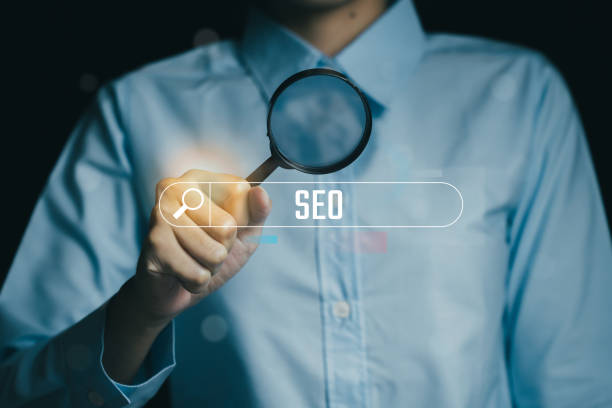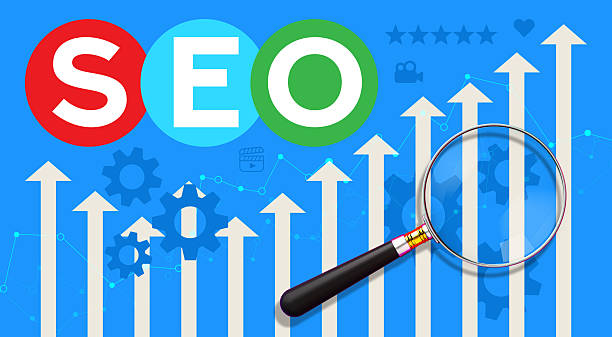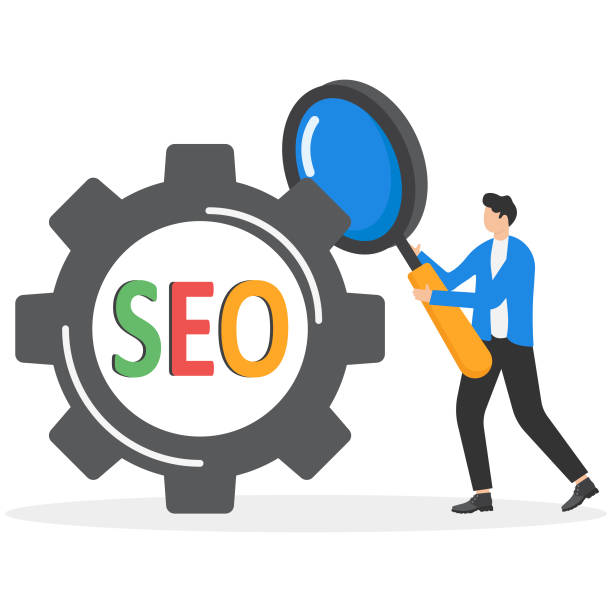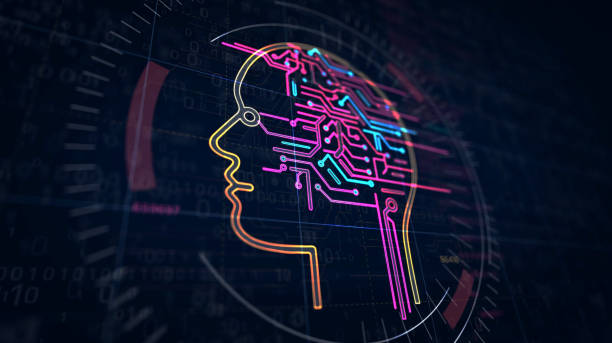What is Technical SEO and Why Does it Matter?

What is Technical SEO and Why Does it Matter?
#Technical SEO involves optimizing the technical aspects of your website to ensure that search engines like #Google can easily find, crawl, and index your site.
While content SEO focuses on the quality and relevance of your content, and off-page SEO focuses on building authority through backlinks and other methods, technical SEO relates to the infrastructure of your website.
The importance of technical SEO lies in the fact that if your website has technical issues, you cannot achieve a good ranking in #search results, even with the best content and link-building strategy.
A site with strong technical SEO provides a better user experience, has faster loading speeds, and is more understandable for search engines, all of which help to improve rankings and increase organic traffic.
Are you frustrated by the low conversion rate of your online store? Rasaweb transforms your online store into a powerful tool for attracting and converting customers!
✅ Significantly increased visitor-to-buyer conversion rate
✅ Unmatched user experience for increased customer satisfaction and loyalty⚡ Get a free consultation from Rasaweb!
Reviewing and Optimizing Site Structure for SEO

Reviewing and Optimizing Site Structure for SEO
Site structure is one of the critical factors in technical SEO.
A proper site structure helps search engines easily find and index the different pages of your site.
Also, a logical and user-friendly structure improves user experience and reduces the bounce rate.
To optimize the site structure, you should pay attention to the following:
1.
Using a Hierarchical Site Architecture: Your site should have a tree structure that starts from the home page and is divided into categories and sub-pages.
This helps search engines understand the relationships between different pages of your site.
2.
Creating an XML Sitemap: An XML sitemap is a file that introduces all the important pages of your site to search engines.
This map helps search engine crawlers quickly find and index all the pages of your site.
3.
Using Clear and SEO-Friendly URLs: The URLs of your site’s pages should be short, relevant, and contain keywords.
Avoid using long and complex URLs.
4.
Implementing Breadcrumb Navigation: Breadcrumb Navigation is a type of internal linking that helps users find their way around your site.
This type of linking also helps search engines better understand your site structure.
SEO implementation includes this.
Optimizing Site Loading Speed

Optimizing Site Loading Speed
Site loading speed is an important factor in SEO and user experience.
Users who experience slow page loading speeds are more likely to leave your site and go to your competitors.
Google also considers site loading speed as one of the ranking factors.
To optimize site loading speed, you can use the following methods:
1.
Compressing Images: High-volume images are one of the main reasons for reducing site loading speed.
Before uploading images to the site, compress them to reduce their volume.
2.
Enabling Browser Cache: By enabling browser cache, users’ browsers can store your site’s files in their memory and load your site’s pages faster on subsequent visits.
3.
Using CDN: CDN (Content Delivery Network) is a network of servers located in different parts of the world.
By using a CDN, your site’s files are located on the server closest to the user, and the site loading speed increases for users around the world.
4.
Optimizing Code: Optimize your site code to reduce its volume and increase site loading speed.
| Factor | Effect on Speed | Solution |
|---|---|---|
| Images | Significant Decrease | Compression, Use of Appropriate Formats |
| Browser Cache | Significant Increase | Enabling Cache |
| CDN | Significant Increase | Using CDN |
Using speed testing tools like PageSpeed Insights helps you to check the performance of your site pages and identify weaknesses.
The Importance of Mobile-Friendliness

The Importance of Mobile-Friendliness
Given that most internet users access websites through mobile devices, mobile-friendliness is a very important factor in SEO.
Since 2015, Google has introduced the Mobile-First Indexing algorithm, which means that Google considers the mobile version of your website for indexing and ranking.
To ensure your website is mobile-friendly, you should pay attention to the following:
1.
Using Responsive Design: Responsive design allows your website to automatically adapt to the screen size of different devices (mobile phone, tablet, laptop, etc.).
2.
Optimizing Loading Speed on Mobile: Site loading speed on mobile should be optimized.
Mobile users expect your site’s pages to load quickly.
3.
Using Readable Fonts: The fonts used on your website should be readable on mobile devices.
4.
Avoiding the Use of Flash: Flash is not supported on mobile devices.
Avoid using Flash on your website.
Do you dream of a thriving online store but don’t know where to start?
Rasaweb is your comprehensive online store design solution.
✅ Attractive and user-friendly design
✅ Increased sales and revenue⚡ Get a free consultation
Optimizing Robots.txt and Sitemap.xml Files

Optimizing Robots.txt and Sitemap.xml Files
The Robots.txt file is a text file that tells search engines which pages of your site they should not crawl and index.
The Sitemap.xml file is an XML file that introduces all the important pages of your site to search engines.
Optimizing these two files helps search engines to crawl and index your site more effectively.
To optimize these two files, you should pay attention to the following:
1.
Checking Robots.txt File: Make sure your Robots.txt file allows search engines to crawl and index the important pages of your site.
Avoid blocking important pages of your site in the Robots.txt file.
2.
Creating and Updating Sitemap.xml File: Create a Sitemap.xml file and update it regularly so that all new and updated pages of your site are included in it.
Register your Sitemap.xml file in Google Search Console.
3.
Testing Robots.txt File: Use Robots.txt testing tools to check the correctness of your Robots.txt file.
Technical SEO is very important for Google bot crawlers.
Using internal and external links is also important in SEO.
Checking and Fixing Crawl Errors

Checking and Fixing Crawl Errors
Crawl Errors occur when search engines cannot access your site’s pages.
These errors can occur for various reasons, including broken links, deleted pages, and server problems.
Checking and fixing crawl errors is very important for SEO, as these errors can prevent search engines from indexing your site’s pages.
To check and fix crawl errors, you can use Google Search Console.
In Google Search Console, the Crawl Errors report shows you which pages of your site have errors and what is the reason for these errors.
After identifying crawl errors, you need to fix them.
To fix crawl errors, you can use the following methods:
1.
Fixing Broken Links: Find broken links and replace them with correct links.
2.
Creating 301 Redirects: If you have deleted a page, create a 301 redirect from that page to a related page.
3.
Fixing Server Issues: If crawl errors occur due to server problems, contact your hosting company to fix these problems.
The Importance of Using SSL/HTTPS

The Importance of Using SSL/HTTPS
SSL (Secure Sockets Layer) is a security protocol that encrypts communication between users’ browsers and your website’s server.
HTTPS (Hypertext Transfer Protocol Secure) is the secure version of your website that uses SSL.
Using SSL/HTTPS is very important for the SEO and security of your website.
Since 2014, Google has considered HTTPS as one of the ranking factors.
Also, using SSL/HTTPS assures users that their information is secure during the transfer between your browser and server.
To enable SSL/HTTPS, you need to purchase an SSL certificate for your website and install it on your server.
Most hosting companies offer free SSL certificates.
| Feature | HTTPS (SSL) | HTTP |
|---|---|---|
| Security | Encrypted | Not Encrypted |
| Ranking | Improved | No Impact |
| User Trust | High | Low |
Optimizing Canonical Tags

Optimizing Canonical Tags
The Canonical tag is an HTML tag that tells search engines which version of a page is the original and authoritative version.
The Canonical tag is used to prevent duplicate content problems.
Duplicate content occurs when multiple pages on your website have similar or identical content.
Duplicate content can hurt your site’s ranking, as search engines don’t know which version of the page to display in search results.
To use the Canonical tag, you need to put the `<link rel=”canonical” href=”URL”>` tag in the <head> section of the page, where URL is the address of the original and authoritative page.
Website indexing and SEO are done through these tags.
Are you losing potential customers due to an unprofessional website? Rasaweb is your answer! With our specialized corporate website design services:
✅ Enhance the credibility and position of your business
✅ Experience attracting more targeted customers
⚡ Act now to receive a free consultation!
Optimizing Structured Data

Optimizing Structured Data
Structured Data is a type of code that helps search engines better understand the content of your site’s pages.
Structured data can be used to provide information about various types of content, including articles, products, events, and instructions.
By using structured data, you can help search engines display Rich Snippets in search results.
Rich Snippets are an enhanced display of your site’s information in search results that can increase the click-through rate.
To implement structured data, you can use the Schema.org standard.
SEO is a requirement for an internet business.
Improving and speeding up SEO depends on observing its principles.
Paying attention to the external SEO of the site along with the internal SEO is of great importance.
Continuous Monitoring and Analysis

Continuous Monitoring and Analysis
Technical SEO is an ongoing process.
After implementing optimization techniques, you should continuously monitor your site’s performance and make necessary changes if needed.
To monitor and analyze site performance, you can use various tools including Google Analytics, Google Search Console, and SEMrush.
Using these tools, you can get information about site traffic, keyword ranking, crawl errors, and site loading speed.
By analyzing this information, you can identify your site’s strengths and weaknesses and adjust your SEO strategy accordingly.
To improve the SEO of the site, you can get help from an SEO expert.
SEO is one of the most important pillars of digital marketing.
SEO and content marketing are closely related.
Frequently Asked Questions
| Question | Answer |
|---|---|
| What is SEO? | SEO, or Search Engine Optimization, is a process to increase the quality and quantity of website traffic by improving the site’s ranking in the natural (organic) results of search engines like Google. |
| What are the main types of SEO? | SEO is divided into three main categories: On-Page SEO, Off-Page SEO, and Technical SEO. |
| What does On-Page SEO include? | On-Page SEO includes optimizing elements within the website, such as keywords, page title (Title Tag), meta descriptions (Meta Description), content, URL structure, images, and internal links. |
| What is Off-Page SEO? | Off-Page SEO refers to activities outside the website that help improve its ranking, such as backlink building, social media marketing, and brand mentions. |
| What is Technical SEO? | Technical SEO involves optimizing the technical aspects of the website to help search engines crawl and index it better. This includes site speed, mobile-friendliness, site structure, sitemaps, and the Robots.txt file. |
| What role do Keywords play in SEO? | Keywords are terms that users enter into search engines. The correct and targeted use of relevant keywords in the content and elements of the site helps search engines understand the topic of your page and display it to related searches. |
| What is a Backlink and why is it important? | A backlink, or inbound link, is a link from one website to another. Backlinks act as a “vote of confidence” from other sites for search engines and play an important role in the credibility and ranking of the site, especially if they are from reputable sites. |
| What impact does high-quality content have on SEO? | High-quality, relevant, comprehensive, and unique content not only attracts and retains users but also shows search engines that your page is valuable. This helps improve ranking, reduce bounce rate, and increase user time on the site. |
| Why is site loading speed important for SEO? | Site loading speed is an important ranking factor for Google. Faster sites provide a better user experience, have lower bounce rates, and are preferred by search engines. |
| Is SEO a one-time process? | No, SEO is an ongoing and long-term process. Search engine algorithms are constantly changing, competition is increasing, and the site’s content also needs to be updated. Therefore, SEO requires continuous monitoring, analysis, and optimization. |
And other services of Rasa Web advertising agency in the field of advertising
Smart Marketplace: An effective tool to improve SEO ranking by optimizing key pages.
Smart UI/UX: Transform SEO ranking with marketing automation.
Smart SEO: A creative platform to improve online growth with an SEO-centric content strategy.
Smart Direct Marketing: Transform digital branding with attractive user interface design.
Smart Sales Automation: A combination of creativity and technology to increase site visits through intelligent data analysis.
And more than a hundred other services in the field of internet advertising, advertising consulting, and organizational solutions
Internet Advertising | Advertising Strategy | Advertorial
Resources
What is Technical SEO?
,Why is Technical SEO Important?
,What is Technical SEO and Why Does it Matter?
,Comprehensive Guide to Technical SEO
? Are you ready to transform your business in the digital world? Rasaweb Digital Marketing Agency, offering comprehensive services including professional online store design, search engine optimization (SEO), and advertising campaign management, is your partner on the path to achieving online success. Contact us today and secure the digital future of your business.
📍 Tehran, Mirdamad Street, next to Central Bank, South Kazerun Alley, Ramin Alley, No. 6




